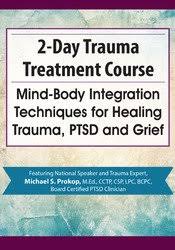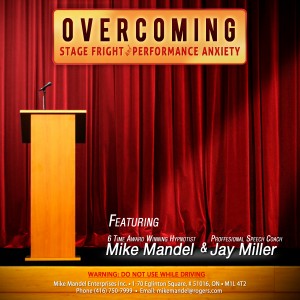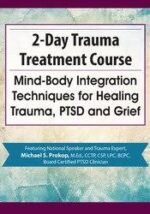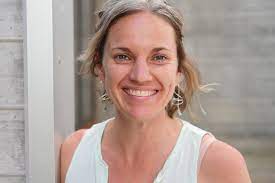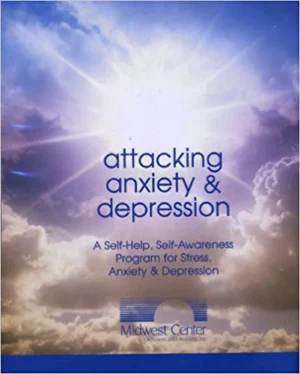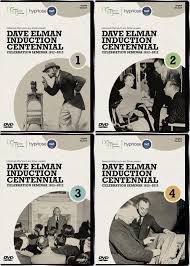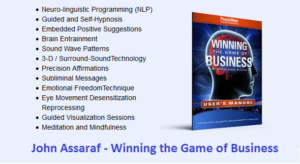Despite our best intentions, clients are often triggered or even retraumatized by talking about their experiences before they have the skills to regulate their emotions, calm their bodies and focus on the present.
Michael Prokop – Trauma Treatment Course, Mind-Body Integration Techniques for Healing Trauma, PTSD and Grief
Are you confident in your clinical work with clients suffering from trauma or PTSD?
Or do you have a pit in your stomach after a session with a traumatized client because you fear that you may have done more harm than good?
Despite our best intentions, clients are often triggered or even retraumatized by talking about their experiences before they have the skills to regulate their emotions, calm their bodies and focus on the present.
This common treatment pitfall can lead to client’s withdrawing from the experience, avoiding their thoughts and feelings, or ending therapy all together. By incorporating mindfulness skills, clinicians can help clients to tolerate distressful memories, triggers and emotions in-order-to successfully begin to navigate their trauma narrative and move into post-traumatic growth.
Watch this recording and you will take away evidence-based, best-practice clinical interventions based on the neuroscience of traumatic stress with effective mind-body treatment approaches to have better clinical outcomes! Leave this course with more confidence in your trauma work!
Analyze the impact of trauma and disrupted attachments on the structure and function of the developing mind and brain.
Assess a client’s sensory, emotional and cognitive reactions to a traumatic event and develop a brain-based integrated treatment program.
Describe why premature cognition can often re-traumatize a client and how sensory-motor processing can alleviate traumatic re-experiencing.
Examine how traumatized clients process internal and external information.
Incorporate self-regulation and relaxation techniques for trauma symptoms and traumatic growth.
Correlate how adverse childhood experiences (from the ACEs Study) impact brain development, emotion regulation & cognition.
Integrate specific techniques that enhance attention, interoception, affect regulation, physical mastery and sensory-motor awareness.
Summarize the recent advances in the neurobiology of trauma and complicated grief and how it can impact your clinical work.
Practice body awareness to stabilize, ground and center traumatic sensations and emotions in your clients.
Utilize body-based and cognitive treatment approaches in your clinical practice with traumatized clients.
Integrate Sensory Experiencing, Affect Regulation, CBT and Embodied Mindfulness to more effectively treat the whole person.
Modify your clinical assessment and intervention strategies when working with traumatized children and adolescents.
Would you like to receive Michael Prokop – Trauma Treatment Course, Mind-Body Integration Techniques for Healing Trauma, PTSD and Grief ?
The Neuroscience of Trauma
The Triune Brain and the neurobiology of traumatic stress
How trauma is held in the body
Arousal management, learned helplessness, and fear regulation
Enhance affect regulation
Somatic re-experiencing of trauma to “attend and befriend” traumatic body sensations and feelings
Trauma and Complicated Grief
Stages of loss and recovery
How trauma “freezes” the normal grieving process
Signs of complicated/traumatic grief
Factors contributing to complexities in grief
Grief, bereavement in DSM-5® and viable treatment implications
Assessment of Traumatic Stress
Diagnostic and Statistical Manual of the APA
ACEs (Adverse Childhood Experiences) Study and Developmental Trauma
Diagnose PTSD with the PCL-5
Treatment Approaches to Treat Trauma
Mindfully observing sensations, feelings, perceptions, and thoughts
Bottom-up: somatic interventions, sensory motor integration, breathwork
Top-down: CBT, Rational Emotive Therapy, Positive Self Talk
Horizontal: EMDR, Bilateral stimulation
Reprocess and Transform Trauma: Treatment Strategies
Use titration, grounding, centering and pendulation
Integrate body-oriented and neurologically-based therapy with CBT
Embodied mindfulness
Coherent story/experiences and metabolization of traumatic memories
Breathwork, Progressive Muscle Relaxation, and Autogenics
Multisensory Guided Imagery and systematic desensitization
Self-regulation and relaxation
Art-therapy, play and theatre movement-based interventions
Sensory integration
Mindfulness with self-compassion
Posttraumatic Growth: Empowerment and Resilience
Positive Psychology Interventions
Navy Seal Mental Toughness Model
Instill optimism, hope, curiosity and imagination
Forgiveness, gratitude and positive emotions
Renewed sense of meaning and purpose
Use signature strengths
Enhance relationships and social support
Self-esteem, self-efficacy and resilience
Volunteering and giving
Reconnection to self, family, society and hopes/dreams
Traumatized Children and Adolescents: The Developing Brain, Body and Mind
High risk characteristics, pre-natal and early life trauma
Mirror neuron systems, attachment, RAD and brain development
Disassociation, self-blame, guilt, and shame
Self-regulation, Interpersonal Neurobiology, impulse control, and frustration tolerance
Integrate Body Work and Trauma Focused CBT for children
Brain-based interventions
Limitations of Research and Potential Risks
No “one size fits all” for any modality of trauma treatment
Various definitions of trauma with different treatment implications
Side effects may include an initial increase in symptoms
Empirical verses anecdotal evidence

